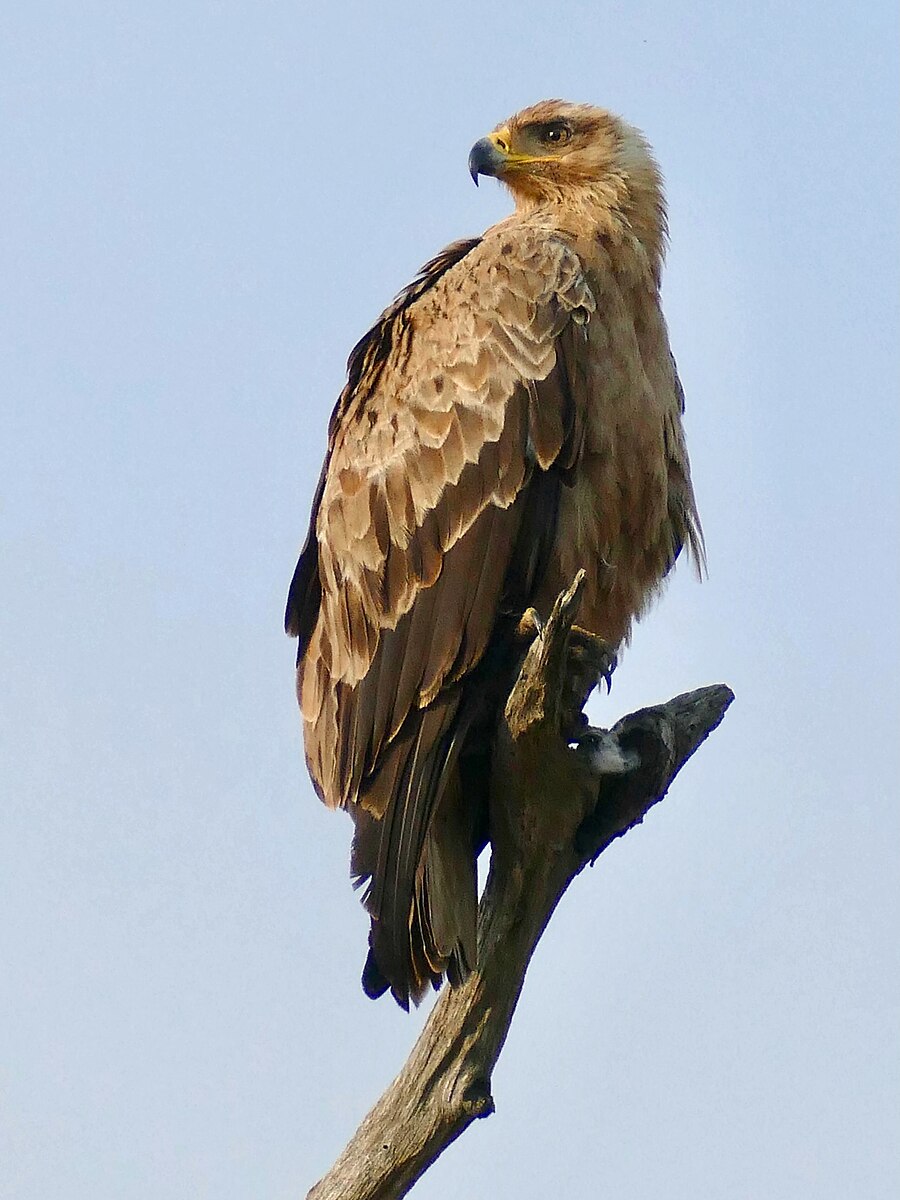Tawny eagles (Aquila rapax) are a species of bird of prey that can be dangerous to animal enthusiasts, particularly those who keep smaller animals as pets or who work with other birds of prey. This blog post will explore the reasons why tawny eagles can be dangerous and the potential risks they pose.
Hunting and Predation Capabilities
Tawny eagles are opportunistic hunters that feed on a wide variety of prey, including mammals, birds, reptiles, fish, amphibians, and insects. They have been known to take down animals as large as hares and dikdiks, and can sometimes pose a threat to smaller pets or other birds of prey. Their powerful talons and sharp beaks make them formidable predators, capable of inflicting serious injuries on their prey.
Aggressive Territorial Behavior
 Image source: Tawny Eagle by Bernard DUPONT
Image source: Tawny Eagle by Bernard DUPONT
Tawny eagles are highly territorial and can be aggressive towards other birds, including those of the same species. They have been known to engage in cartwheeling interactions, which can be aggressive fights between territorial eagles and intruders of the same gender. While recent observations have shown that cartwheeling can also be a regular part of the courtship display between males and females, these aggressive behaviors can still pose a threat to other birds and animals in the vicinity.
Poisoning and Persecution Risks
Tawny eagles are susceptible to deliberate and secondary poisoning, particularly when people poison carcasses to kill large predators such as lions and leopards. They can also suffer from human persecution and are at risk of drowning in reservoirs or being killed by vehicles when scavenging carrion on roads. These threats can have a significant impact on the overall population of tawny eagles, making them a vulnerable species.
Habitat Loss and Land-use Changes
Tawny eagles are affected by habitat loss and land-use changes such as intensified cattle grazing, firewood collection and sale, and the charcoal industry. Such changes can impact their breeding behavior, foraging success, and ultimately the survival of individual birds. As their natural habitats are increasingly encroached upon, tawny eagles may be forced to adapt to new environments, which can lead to increased interactions with humans and potential conflicts.
Precautions and Considerations
While tawny eagles are not typically aggressive towards humans unless provoked or threatened, it’s always important to exercise caution and respect when observing any wild animal, particularly those of prey. Animal enthusiasts and bird handlers should be aware of the potential risks posed by tawny eagles and take appropriate measures to ensure the safety of themselves, their pets, and other animals in their care.
In conclusion, tawny eagles can be dangerous due to their hunting and predation capabilities, aggressive territorial behavior, susceptibility to poisoning and persecution, and the impact of habitat loss and land-use changes on their populations. By understanding these risks and taking appropriate precautions, we can coexist with these magnificent birds of prey while also protecting the safety of ourselves and the animals in our care.
References:
- Mobbing: What It Is, and Why Do Mobbed Birds Put Up With It – Buffalo Bill Center of the West. (2019, January 21). Retrieved from https://centerofthewest.org/2019/01/21/mobbing-what-it-is-why-birds-dont-defend-themselves/
- Tawny eagle – Facts, Diet, Habitat & Pictures on Animalia.bio. (n.d.). Retrieved from https://animalia.bio/tawny-eagle/1000
- Birds of Prey: Will They Harm Your Kids and Pets? – Chirp Nature Center. (2020, September 27). Retrieved from https://chirpforbirds.com/how-to/birds-of-prey-will-they-harm-your-kids-and-pets/
- Tawny Eagle | The Peregrine Fund. (n.d.). Retrieved from https://peregrinefund.org/explore-raptors-species/eagles/tawny-eagle

